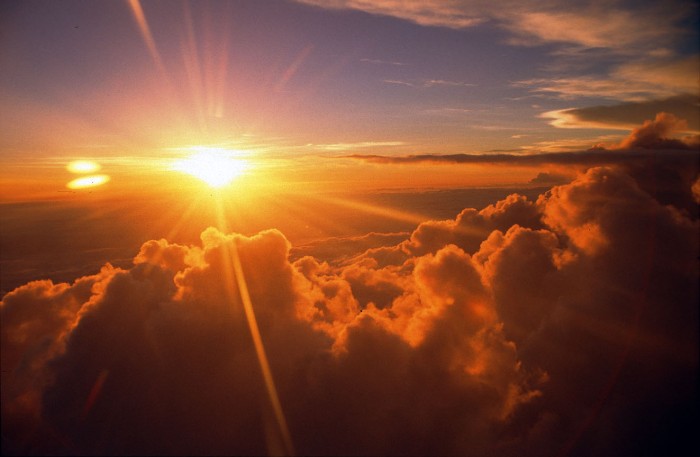SIGNS OF ALLAH
A smaller star than the Sun would cause the Earth to grow extremely cold, and a bigger star would scorch the Earth.
The Sun is traveling at the enormous speed of 720,000 kilometers an hour.
The surface temperature on Venus reaches as high as 450° C, which is sufficient to melt lead.
Winds blowing nearly 2,000 kilometers an hour blast across the surface of Neptune.
Saturn is composed entirely of gas and its density is less than water.
The difference between the daytime and nighttime sides of Mercury is as much as 1,000°C.
A reduction of just 10in the sun’s radiant energy would result in the earth surface’s being covered by layers of ice many meters thick.
Carbon is the basis of life on earth because all organic molecules (such as nucleic acids, amino acids, proteins, fats, and sugars) are formed by the combination of carbon with other elements in various ways.
Earth could not be a home for life if it were as near the sun as Venus is or as far from it as Jupiter.
The atmosphere protects the earth from the freezing cold of space, which is about minus 270oC.
A single sun burst is equivalent to 100 billion atomic bombs similar to the one dropped on Hiroshima.
We would need over five hundred years to count the number of atoms inside a tiny grain of salt.
Our sun has a surface temperature of about 6,000°C.
Every cloud contains thousands—sometimes millions—of tons of water in the form of vapor.
Every year, the amount of water that evaporates and that falls back to the Earth in the form of rain is “constant”: 513 trillion tons.
The pressure the mountains exert on the crust of the earth with their enormous mass prevents the magma movements in the core of the earth from reaching the earth and destroying the earth’s crust.
The speed of rain drops, regardless of their size, does not exceed 8 meters in a second.
The world has to rotate about its axis at a certain speed (1,670 km/h at the equator). If the earth’s speed of rotation were to exceed a certain limit, the atmosphere would grow extremely warm, increasing the gas molecules’ velocity of escape from the earth and causing the atmosphere to be dispersed in space and to vanish.
The distance between stars in our galaxy is about 30 million miles. If this distance was much less, planetary orbits would be destabilized.
The earth’s axis is inclined 23° 27′ to the plane of the ecliptic. IF this inclination did not exist, the temperature gradient between the poles and equator would be much higher than it is and the temperate zones wouldn’t be so temperate—or livable.
If air resistance were higher, our lungs would be forced to work harder to enable us to breathe.
If surface gravity were stronger, atmosphere would retain too much ammonia and methane.
If surface gravity were weaker, planet’s atmosphere would lose too much water.
If oxygen to nitrogen ratio in the atmosphere were larger, advanced life functions would proceed too quickly.
If plants didn’t release oxygen, the oxygen-breathers would eventually use up all the free oxygen in the atmosphere and that would be the end of them.
If your body’s temperature were to fall just a few degrees, many of its vital functions would fail.
If the surface of our world had less water than it does land, the temperature differences between night and day would have been much greater.
Verily! In the creation of the heavens and the earth, and in the alternation of night and day, and the ships which sail through the sea with that which is of use to mankind, and the water which Allaah sends down from the sky and makes the earth alive therewith after its death, and the moving {living} creatures of all kinds that He has scattered therein, and in the veering of winds and clouds which are held between the sky and the earth, are indeed aayaat {proofs, evidences, lessons, signs, revelation, etc.} for people of understanding.] Soorat Al Baqarah{2:164}








